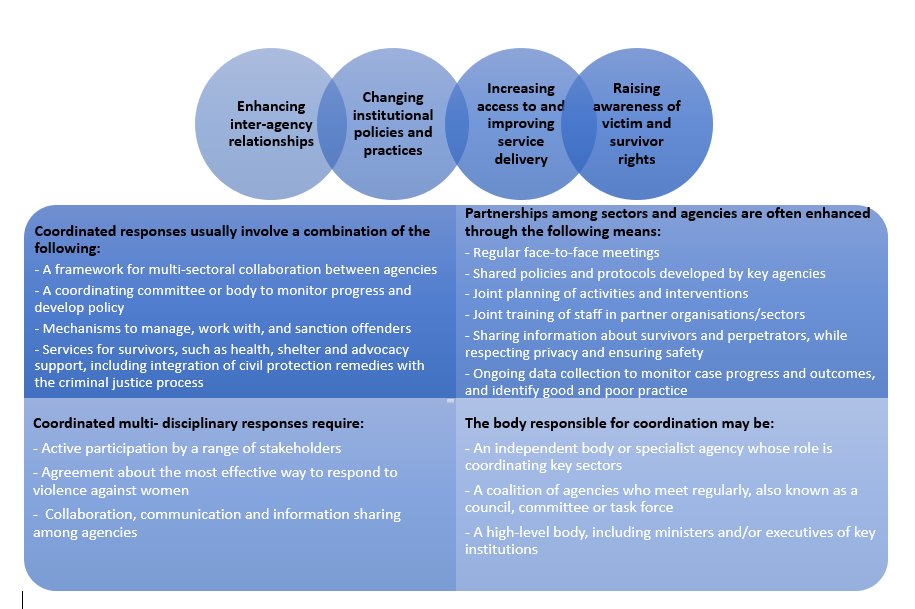Governance of coordination has two major components. The first component is the creation of laws and policies required to implement and support the coordination of services for victims/survivors to eliminate or respond to violence against women and girls. The second component is the process of holding stakeholders accountable for carrying out their obligations in their coordinated response and ongoing oversight, monitoring and evaluation of their coordinated response. Governance is carried out at both the national and local levels.
Structures and mechanisms for facilitating coordination are essential. They ensure that multi-sectoral strategies and interventions to address violence against women are implemented and that the goal of increased collaboration is achieved. Coordination structures provide a forum for bringing together in a formal partnership the people and resources needed to actively effect the desired changes. They also provide an organisational framework and systems for governance and accountability.
Common Components of a Coordinated Response

Examples of how coordinated responses to violence against women can be achieved vary from one country or locality to another. One important factor that determines which models might work is how legal and administrative structures are organised in different contexts. For example, states may have unitary or federal forms of government, or the sub-national levels of decision-making authority may vary. This will influence the level at which coordination structures are located and the legal and policy frameworks they will employ.
Another factor that determines the appropriate coordination model is from where the principal impetus for changes to the responses to violence against women comes. For example, there may be a national drive to coordinate efforts to address violence against women or initiatives may be primarily sub-national (regional/state/provincial or local), either through partnerships with state agencies, NGOs or a combination of the two. This can determine whether there is a ‘top-down’ or ‘bottom-up’ approach to developing coordination systems and structures.
Structures are needed at all levels of government to ensure coordination at all levels of responsibility, including policy development, legislative change, funding and service delivery.
